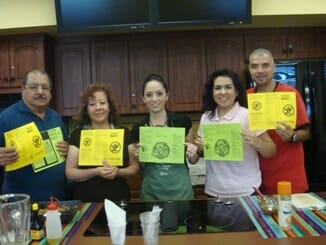Dr. Beth Canfield-Simbro Teaches Food Safety to Kids and Parents
Dr. Beth Canfield-Simbro, an Associate Professor of Public Health & Health Education at the University of Mount Union, used Fight BAC!® materials at Safe Kids Day. The University partnered with the Stark County, Ohio Health Department and many other community organizations to host this family event, aimed at providing safety tips of all kinds. Over 170 children attended this years’ fair. Beth taught food safety to kids and their parents using an interactive display with small refrigerator and a bunch of plastic foods. Children loved guessing which foods had to go in the fridge, and which could stay out safely. Beth also gave away cooking temperature magnets to help families Fight BAC at home after Safe Kids Day was over.


